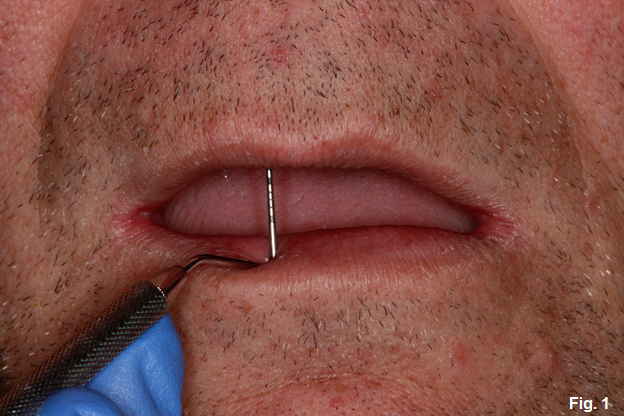 Have you been through the experience of constructing an immediate denture where the patient returned from surgery with an overly prominent display of teeth and denture base? Prosthetic bi-maxillary protrusion?
Have you been through the experience of constructing an immediate denture where the patient returned from surgery with an overly prominent display of teeth and denture base? Prosthetic bi-maxillary protrusion?
Patients with significant wear and compensatory eruption can create a challenge in terms of room for restorative materials. It’s one thing to fix (or re-make) an overly prominent immediate maxillary denture, but what if there are implants involved? The position of the platform of the dental implant is critical in allowing for the appropriate amount of space for restorative materials – helpful for durability and minimizing the need for post insertion restorative maintenance.
 Dental implant supported prostheses were traditionally designed for mal-adaptive denture patients with significant alveolar bone loss in the mandibular arch. Fixed hybrid (fixed-detachable) prostheses for the mandible were originally designed as a highwater prosthesis, many of which have been in service for several decades.
Dental implant supported prostheses were traditionally designed for mal-adaptive denture patients with significant alveolar bone loss in the mandibular arch. Fixed hybrid (fixed-detachable) prostheses for the mandible were originally designed as a highwater prosthesis, many of which have been in service for several decades.
Modifications in the initial design include extended contours and removable prostheses to facilitate hygiene and provide options for supporting the structure of the lower third of the face whether for the maxilla or mandible.
Identifying the Incisal Edge Position
The goal – to identify the desired incisal edge position and work backwards in order to create the treatment plan. (Figures 1 and 2)
A vacuum formed thermoplastic record basemade with Copyplast provides the opportunity to make use of known reference points of the denture with the goal of providing meaningful information for the construction of a dental implant supported removable prosthesis. The Ministar S has the ability to apply positive pressure onto the complete denture while simultaneously creating a vacuum beneath the working model to optimize the adaptability of the thermoplastic material.

In this situation, gray wax was added to the record base to “test” the overall restorative plan can provide useful information in planning the definitive restoration. Certainly, incisal edge position, midline position, occlusal plane come to mind based on facially determined reference points. With the incisal edge position, it is possible to work backwards to determine how much space will be required for restorative materials. (Figures 3-5)

The extension of the Copyplast material to create an “apron” on the labial aspect of the maxillary residual ridge allows for marks to be made to identify measurements. (Figure 6) I now have critical information that can be evaluated intra-orally and transferred directly to the model. Of course the photographs improve the clarity of communication to the surgeon in order to set the stage for the final result. (Figure 7)
Douglas G. Benting, DDS, MS, FACP, Spear Visiting Faculty and Contributing Author. [ www.drbenting.com ]